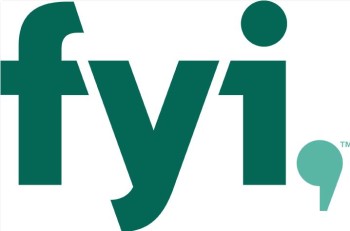Independent Restaurants vs. Chains – How Technology Can Level the Playing Field

According to the American Express Restaurant Trade Survey released at this year’s National Restaurant Association (NRA) show, a full 87 percent of restauranteurs believe incorporating technology into their restaurants would help attract more customers.
However, 64 percent of those restauranteurs said customer feedback was the top reason that would compel them to invest in technology. While customer feedback is always important, the greatest impact of technology on independent restaurants can be found in day-to-day operational efficiencies and cost reduction – the bottom line is never insignificant. These two areas are critical to allow independent owners to level the playing field against the threat of larger chain restaurants.
Today’s playing field
Chain restaurants typically enjoy the deep pockets and state-of-the-art technology provided by their parent companies. Technology allows them to better control inventory, pricing, revenue, staff and guest management, and much, much more.
On the flip side, independent restaurants struggle to keep up with the stronger competition and are often challenged just to survive in the extremely difficult restaurant business. Many of today’s technology solutions for restaurants are siloed – for example, an operator needs to purchase a different solution for point of sale, inventory, and guest and waitlist management. What’s more, many of the popular solutions on the market today require large upfront capital costs and/or high ongoing monthly fees. Absorbing these costs for independent restaurant operators is not easy.
That’s all about to change. Tomorrow’s technology is here, now, with a focus on integration and an operator-centric development approach. This means technology is being designed with independent operators in mind, and with an eye on connecting the entire restaurant business ecosystem to maximize efficiencies and give consumers a better, more personalized restaurant experience.
The future playing field
First and foremost, the newest technologies today are addressing the issue of affordability. The model is shifting towards low upfront costs and low monthly subscription fees, eliminating one of the largest hurdles existing today. Some companies are even offering leasing options to independent operators to cover the upfront costs if they are low on cash flow. Think Restaurant Impossible, for the real world.
This is huge, because cost has prevented many independent restaurants from considering the impact technology could have on their business. In fact, a Gartner-owned company conducted a survey that found a full 55 percent of restaurant buyers were not currently using any restaurant management or POS software at all.
By overcoming the cost barrier to adoption, technology is well on its way to changing the restaurant industry.
Imagine this scenario:
A party of four enters a restaurant and adds their name to the waitlist. They receive a text message confirming their place in line, and then they head to the bar for a drink. The restaurant owner knows that guests are more likely to accommodate the wait and ultimately spend more if they receive a discount at the bar, so the bartender is instructed to offer the first round of drinks “on the house.” The guests enjoy a second beverage while placing an advance-order on an iPad. After receiving a text message letting them know their table is ready, they meet the hostess and proceed to the dining area where they relax until the appetizers they pre-ordered arrive. At the end of the meal, the bar tab and dinner ticket appear on one bill, which the guests can easily split and pay via iPad at the table, without worrying about complicated math. Meanwhile, the hostess has a real-time view on her screen telling her where the table is in the table-turn process, allowing her to provide accurate wait times to the next guests in line.
This isn’t a scene from Back to the Future, and it’s not something that can only take place in a large chain establishment as a result of a heavy spend. With integrated, affordable operator-centric technology solutions, this situation is attainable by any independent restaurant owner – today.
The benefits for restaurant owners
With an integrated guest management and point of sale platform, a restaurant owner can analyze data to more accurately predict wait times, test and learn what incentives drive guests to desired behaviors, and adjust accordingly. Servers can save time by entering table side orders that print instantaneously at the right station in the kitchen. They can accept payment at the table and split the bill with the touch of a button. All of this can be done on a miniature, tablet version of the main POS system to eliminate the need to re-learn functionality. Additionally, hosts can see exactly where a table is at any time during the turn, eliminating the need to leave the host stand and walk around the dining room.
The possibilities are almost limitless. And, the bottom line? Increased efficiencies, better guest service and ultimately – higher profits.
We’re at the very beginning of a major shift in the restaurant industry, one that will level the playing field for operators of all sizes. Independent restaurant owners need to stop buying from the first salesman that comes through the door and start thinking about how technology can set them up for success.
 Written by Mani Kulasooriya is the CEO of CAKE Corporation
Written by Mani Kulasooriya is the CEO of CAKE Corporation
A fully integrated restaurant technology platform and a Sysco company. Mani is an expert in the cross section of financial services and the internet and has worked in the payments and consumer internet space for the past 18 years. In his role at CAKE, Mani has advanced cloud point of sale technology to a suite of integrated technology products for the restaurant industry, making restaurant management and increasing ROI easier and more efficient. Prior to his role at CAKE, Mani worked as the Founder and CEO of Monvia, a web consulting company, as well as in executive roles at Yahoo! and Citibank.








